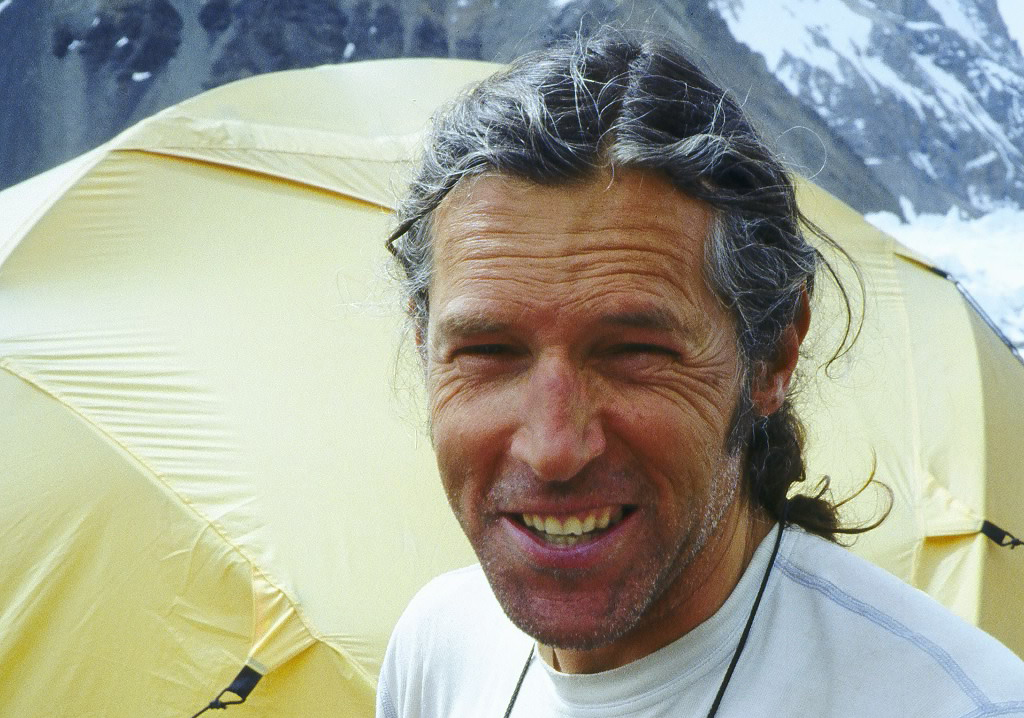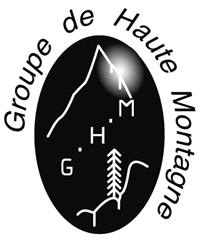Jordi is a long-time IFMGA mountain guide living in Benasque on the southern slopes of the Pyrenees. Born in Barcelona, he spent his youth climbing in the Pyrenees and the mountains of La Rioja, where he began creating new routes. It was during this time that couloir climbing and winter first ascents developed on the Pyrenean peaks. At the beginning of the 1990s he decided to commit fully to the mountains and became a professional guide.
Jordi has made significant contribution to multiple areas of mountaineering, from his high-standard personal ascents in pure style, his long career as a professional guide [more than 30 years of guiding in the Alps], his role as director of the Spanish National Mountaineering Team from 2002 – 2010, to the training of new guides. And this continues. Recently, he guided his friend, the noted Spanish mountaineer and expedition leader, 90-years old Jordi Pons [first Spanish mountaineer to climb the Walker Spur and Eiger north face], up the 4,107m Mönch in the Bernese Oberland.
Perhaps his most significant role is the use of his vision of alpinism – a lightweight, free climbing, modern progressive style – to influence the transition between two generations of Spanish climbers.
As the alpinist and journalist, Oscar Gogorza, writes:
"Long before I met Jordi, he was already a legend in the small world of Spanish mountaineering. Yet he preferred to listen than to talk. I have known him for 25 years and I have never heard him say, “I’ve climbed this, or that”. Never. I have only just discovered the depth of his curriculum vitae, which he kept secret for so long.
Jordi is the link between 20th Century Spanish mountaineers and those of the 21st Century. Through his hands have passed students, whom he trained to become mountain guides; through those same hands passed the talents of the national mountaineering teams, to whom he taught the highest ethical standards, not by lectures, but by example.
Curiously, as someone so reticent to speak, Jordi has always loved words. He is an avid reader, has studied Castilian, and is the founder of a small publishing house for mountaineering literature. He has always believed that the ultimate value of mountaineering is linked to its stories. Man and his experiences tell more than just the climbs. In fact, he wrote a dictionary of mountaineering from A to Z that, in my humble opinion, is worth more than his famous second ascent of K2’s Magic Line.
Shortly after that ascent, I made an appointment to interview him. I left at dawn and drove five hours to Benasque, where I found him sitting in the sun with a coffee, and a sandal on one foot displaying frostbitten toes. Three seconds after I sat down, he looked at me with deep intent and said he would only tell me the facts of his ascent, not his feelings. They were his own and he did not want to share. I understood immediately that I had made the trip for nothing.
Ten years later, we both missed the Montenvers train after an alpine outing. A long, boring downhill hike was ahead of us, and I told him it was time to tell me of his feelings about K2. He spoke: the wait had been worth it.
During the 2024 Piolets d’Or, I hope someone else will ask him about how he felt every time he faced a challenge in the mountains, and not simply what he climbed. I also hope that at the ceremony he will be as happy as the day he met his idol Walter Bonatti, the day the Italian received the first Lifetime Achievement Award”.
Jordi’s most notable ascents and (many) attempts are listed below. As he notes, “I am not the best Spanish mountaineer, but perhaps I am the most persistent?”.
Jordi’s most notable ascents :
|
The Pyrenees His first bivouac - at two weeks of age Opened some of the first sport mixed routes in the Pyrenees. Repeated almost all the classic routes in the range, and in the 1980s and 90s made winter ascents of mythical routes such as the west-northwest face of the Grand Pic du Midi d’Ossau, north spur of the Pique Longue du Vignemale, the Central Dihedral on Peña Telera, and the north face of the Tour de Marboré, as well as two solo attempts on the Pilier de L'Embarradère on the Grand Pic du Midi d’Ossau. Climbed new routes in both summer and winter in the Ordesa, Bujaruelo, and Benasque regions. Patagonia 2008 First ascent of the northeast face of 3,706m Cerro San Lorenzo (ED- to foresummit after joining the last section of the South African route on the east ridge). 2012 First ascents of the East Buttress of 2,640m Cerro Moyano (TD+) and East Buttress of 2,580m Cerro Norte (TD). Peru 2003 First solo ascent of the Japanese route on the south face of 6,395m Chopicalqui (TD). 2005 New variants (at bottom and top) to the 1973 French Route on the northeast face of 6,654m Huascarán Norte (TD-, 12 hours round trip). Other speed solos in the same season: the first solo ascent (and very rare repeat) of the Ecuadorian Route (TD+) on the south face of 6,259m Santa Cruz in six hours and then a downclimb of the original German Route (TD-) on the same face in three hours; solo ascent of the northwest face (TD-) on 6,127m Sarapo in three hours, then a downclimb of the northeast face (TD-) in two hours. 2007 First ascent of the west face of 6,265m Siula Chico (ED+) on his third attempt in five years. A new route on the north face of 6,768m Huascarán Sur (TD+). The first ascent of the south face of 6,188m Nevado Copa (ED, to summit ridge). 2011 First ascent of a Direct Finish to the French route on 6,001m Chacraraju Este (ED). A solo ascent of 6,025m Artesonraju. Himalaya-Karakoram Climbs on the highest peaks, all without supplemental oxygen 1991 Dhaulagiri(8,167m), normal route. 2004 Second ascent of the Magic Line (south-southwest ridge) on 8,611m K2, climbing alone from around 8,300m and then descending the Abruzzi Spur. At the time the Magic Line was considered to be the hardest technical ascent on the mountain and there has been no further ascent. |
2006 Single push ascent of 8,035m Gasherbrum II via normal route. Reached 7,400m on the original Austrian route of Lhotse Shar. 2000 Attempt on the northeast ridge of Everest. 2006 Climbed west face and south ridge of Gasherbrum IV to around 7,200m in alpine style. 2010 Attempt on the Austrian Route on Lhotse Shar and the south face of Lhotse, both in alpine style 2013 Attempt on the south face of Xixabangma in winter, alpine style, approaching from Nepal 2019 Attempted alpine style ascents of the original route on the south face of Nuptse and, again, the Austrian route on Lhotse Shar Third overall ascent and first in alpine style of the west ridge of 6,904m Thalay Sagar (V+ 60°). Second ascent of the southeast ridge (Bonington-Fotheringham route) of 6,501m Shivling West (ED-). First ascent of Kundalini, east face of 6,450m Meru North (6b, A2+ 85°) Attempted new routes on Meru South and Meru North First ascent south pillar to south foresummit (6,600m) of Tengi Ragi Tau (ED). Second (solo) ascent of the east-southeast face/couloir [Steck route, M5 50-60°] on 6,495m Tawoche. A solo ascent of 6,812m Ama Dablam by the south face. First ascent of the west face and southwest ridge of 6,700m Cho Polu (TD). Second ascent of the west face (Infleti, TD) of 5,945m Chugimago North, and the first ascent of the Direct South Face of 6,257m Chekigo (AI5/5+ M6). Canada Three visits to the Rockies to climb ice and mixed routes to WI6+ and M7.
|




